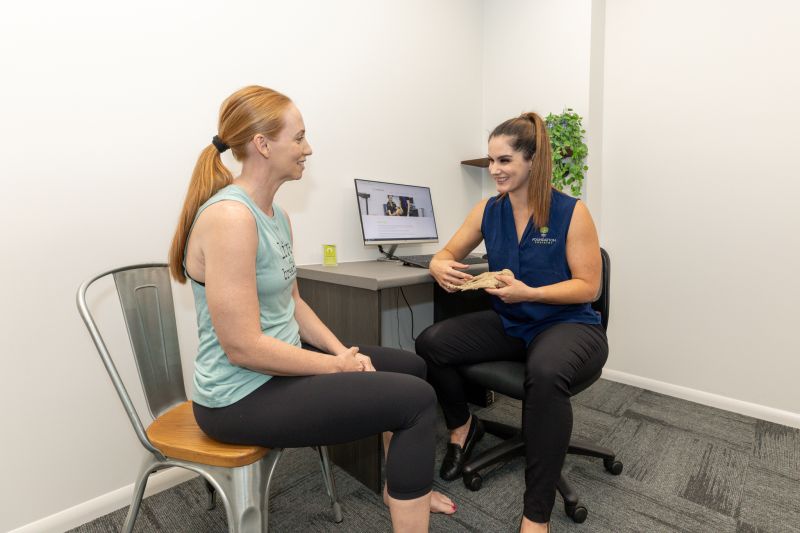More pages in this section
Exercise Induced Lower Leg Pain
Exercise induced lower leg pain is a global term that covers a range of conditions that occur in the lower leg (below the knee) during exercise. Medial tibial stress syndrome or “Shin splints” are the most common example however other conditions can occur, such as chronic exertional compartment syndrome and popliteal artery entrapment syndrome. Diagnosing these conditions usually requires specific scans or tests however often the description of pain and how the pain behaves can provide some clues.
Medial Tibial Stress Syndrome (MTSS) or Shin Splints
MTSS is the most common form of shin pain and refers to stress on the lower inside border of the tibia which becomes painful. Medial tibial stress syndrome is explained in more detail here.
Chronic Exertional Compartment Syndrome (CECS)
The muscles of the lower leg are divided into four compartments – the anterior (A), lateral (L), deep posterior (DP) and superficial posterior (SP) compartments (See Figure 1). Each compartment has multiple muscles, blood supply and nerve supply and is surrounded by a fascia (sheath). During exercise, the muscles in the lower leg increase in size (volume) due to an increase in blood supply or swelling in the muscles. As the muscles expand, they are restricted by the fascia causing an increase in the compartment pressure. This increase in pressure can result in compression to the blood vessels or nerves causing pain, weakness and pins and needles in the leg, ankle and foot. In severe cases, there can be irreversible damage to the muscles and tissues in the compartment, resulting in tissue death!!
Figure 1 – The compartments of the lower leg - – the anterior (A), lateral (L), deep posterior (DP) and superficial posterior (SP) compartments

Signs and Symptoms of Compartment Syndrome
The symptoms for CECS present during exercise. There is usually no pain at the beginning of exercise with symptoms commencing at a predictable time once exercise has commenced. The symptoms don’t improve but rather worsen as exercise continues, usually necessitating cessation of exercise. Once exercise stops, the symptoms usually dissipate and there is often no pain during normal daily activities. The most common symptoms are:
- Tightness in the affected muscle compartment
- Swelling – a feeling of “fullness” or firmness in the muscles
- Cramping
- Paraesthesia – unusual sensations such as pins and needles or numbness that can travel to the foot and ankle
- Weakness /Heaviness in the lower leg
Causes of Exercise induced leg pain
Repetitive and strenuous exercise is thought to be the main cause of CECS. Activities such as running, football, basketball and military personnel can frequently develop this condition. It affects adults more than children or adolescents. During strenuous exercise the muscles can increase in size and volume by 20% resulting in an elevated intra-compartment pressure. Testing the pressure within each compartment can be performed to diagnose CECS. The test is quite invasive and involves inserting a needle that’s attached to a device to measure pressure into the respective compartments before and after exercise is performed.
The anterior compartment is the most affected compartment however it is possible to have CECS in all four compartments.
Treatment for Chronic Exertional Compartment Syndrome
Unfortunately compartment syndrome does not usually respond to conservative treatment, physical therapy or changes in biomechanics. Avoiding the activity that causes symptoms is often the only successful conservative treatment. A surgical procedure called a “fasciotomy” is the most effective treatment for CECS for those people who can’t avoid the activity that causes their symptoms.
Information on Chronic Exertional Compartment Syndrome sourced from www.physio-pedia.com
Popliteal Artery Entrapment Syndrome (PAES)
The popliteal artery is positioned at the back of the knee joint in an area referred to as the popliteal fossa. The popliteal fossa is a diamond shaped space at the back of the knee which contains the popliteal artery, vein and tibial nerve (Figure 2). The walls of the fossa are created by the heads of the gastrocnemius muscle (calf) and hamstrings. Popliteal artery entrapment syndrome occurs when the popliteal artery is trapped or compressed by the head of the gastrocnemius during exercise. During exercise such as running, marching or fast walking, the calf muscle enlarges which can cause compression of the popliteal artery causing pain in the calf and/or foot. Once exercise stops, the pain subsides – this type of pain is referred to as claudication.
Figure 2 – Anatomy of the Popliteal Fossa

Signs and Symptoms of Popliteal Artery Entrapment Syndrome
The symptoms for PAES only occur during exercise. Because the condition is related to the calf muscle, any exercise involving repetitive plantar and dorsiflexion of the ankle may cause an onset of symptoms. Symptoms include:
- Generalised pain / aching in the leg or foot with exercise – the pain can be quite disabling
- Pain reduces and disappears once exercise stops
- There may be changes in skin colour, unusual sensations in the skin (paraesthesia), numbness and coolness in the lower limb
Causes of Exercise Induced PAES
PAES is relatively uncommon and is thought to be related to anatomical anomalies including the position of the popliteal artery in the fossa or the position of the medial head of the gastrocnemius or a combination of both. Symptoms usually present in the 2nd and 3rd decade of life and may be associated with an increase in physical activity which causes the gastrocnemius muscle to enlarge and compress the popliteal artery.
Treatment for Exercise Induced Leg pain
An accurate diagnosis is necessary which can be achieved by viewing the popliteal artery under ultrasound while dorsiflexing and plantar flexing the ankle. There may be requirements for additional radiological investigations to confirm the diagnosis. If PAES is confirmed, surgery is usually required to release the artery from compression.
Information on Popliteal Artery Entrapment Syndrome sourced from https://www.ncbi.nlm.nih.gov
[feature-block]
Are you suffering with lower leg and shin pain? Discover how we can create a personalised treatment approach to help you lead an active, healthy life!
[/feature-block]









